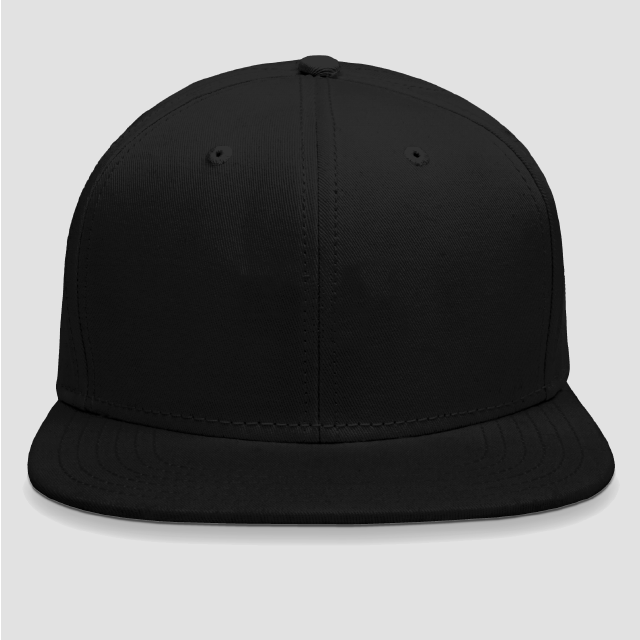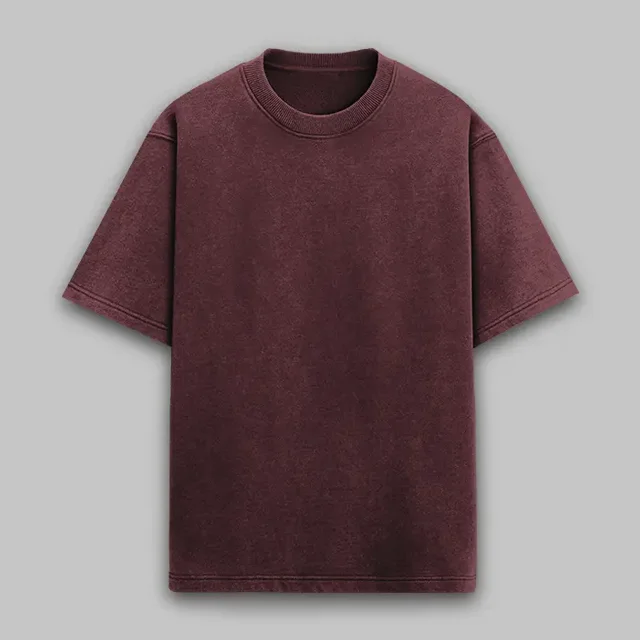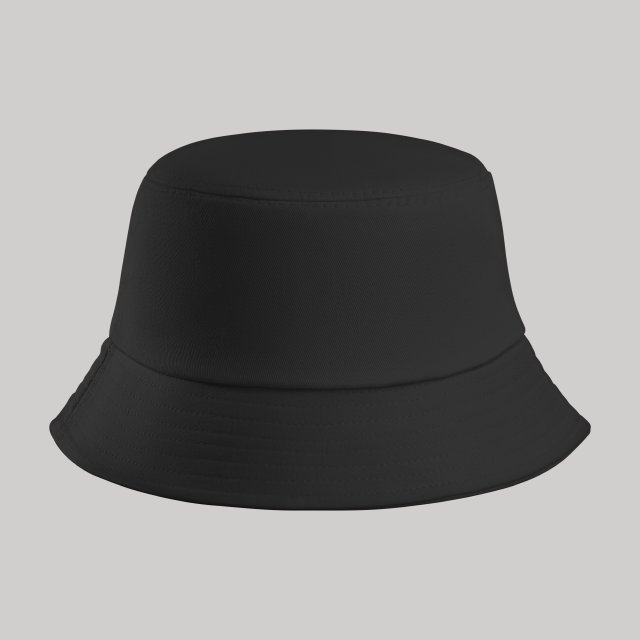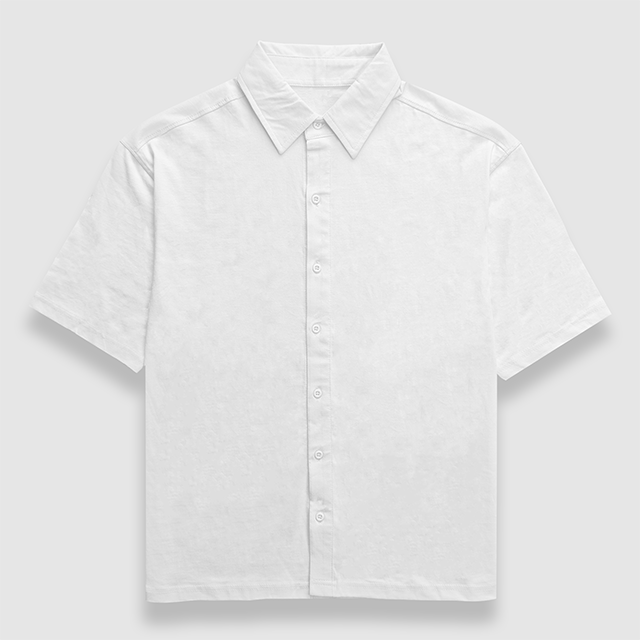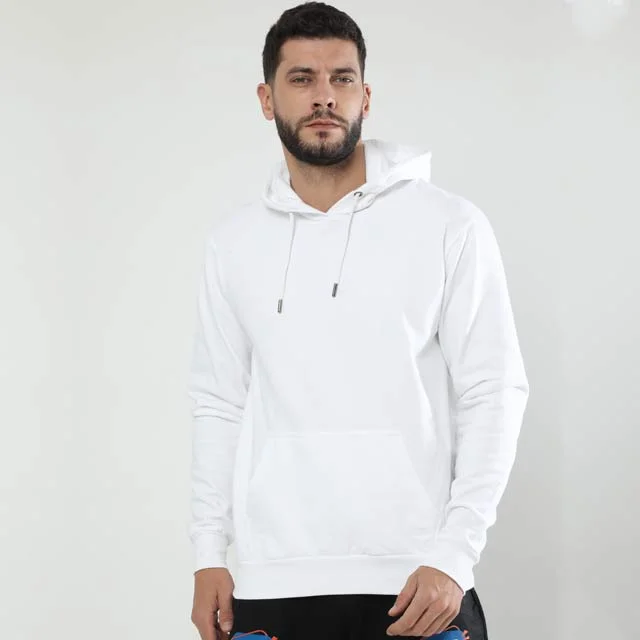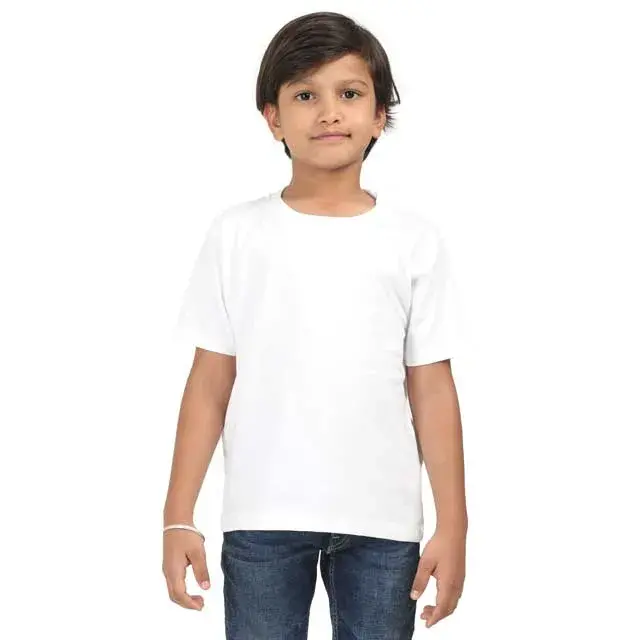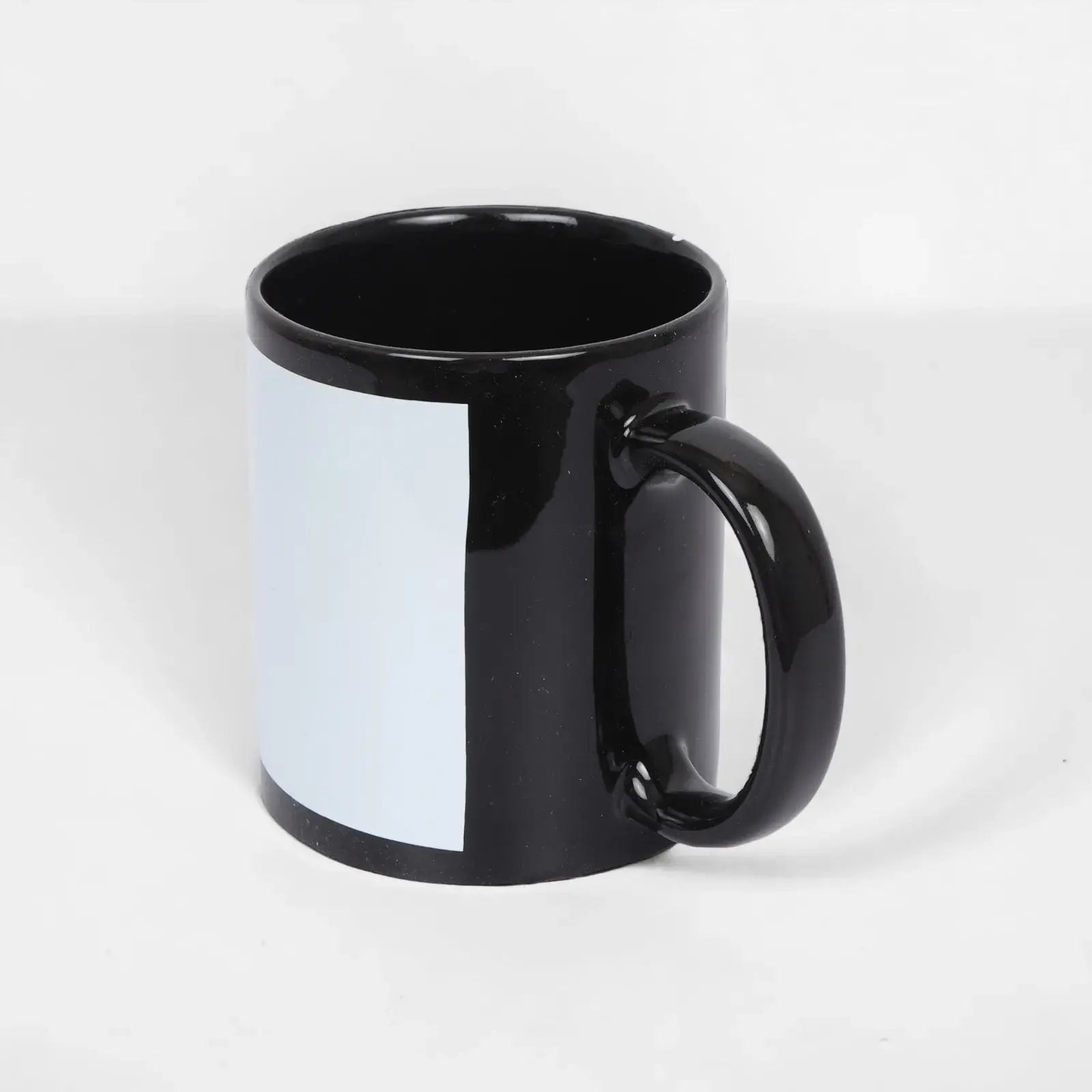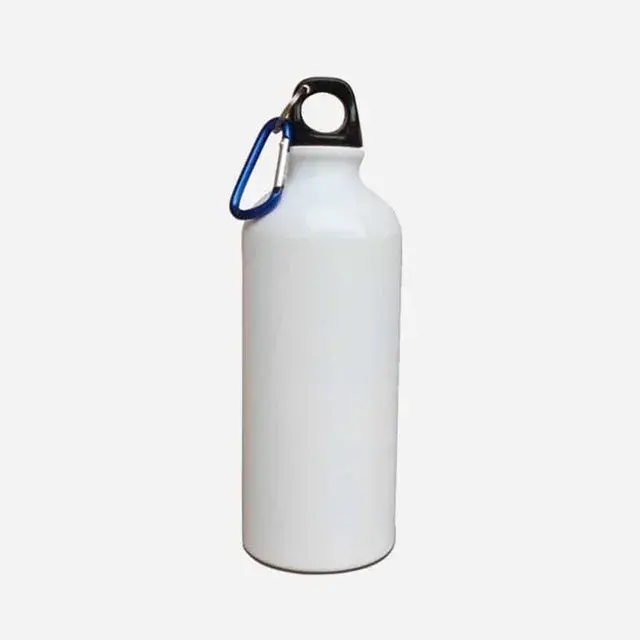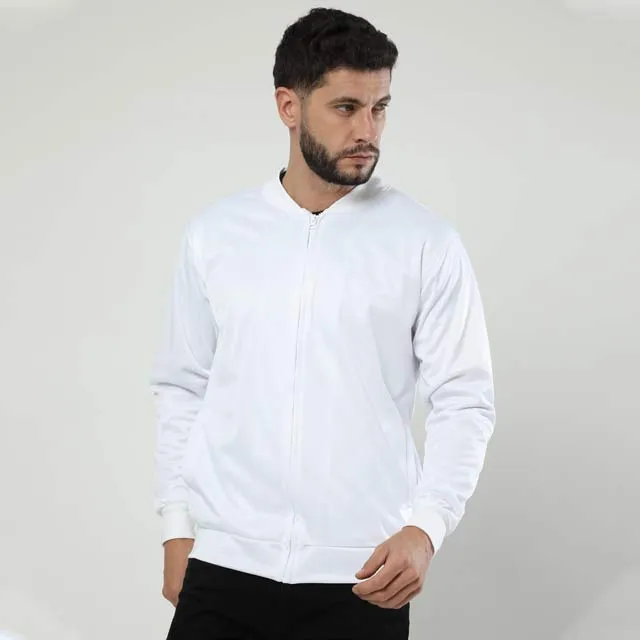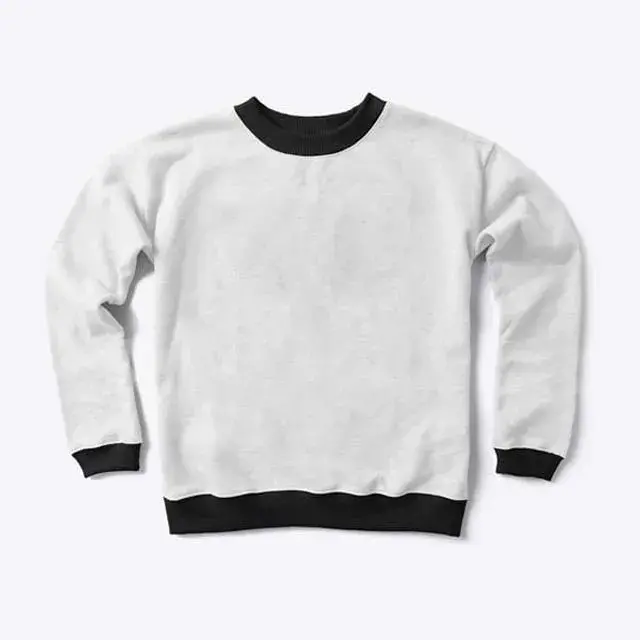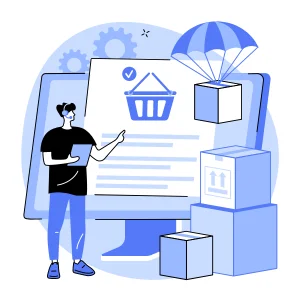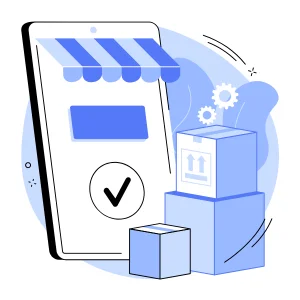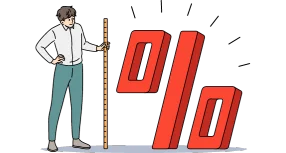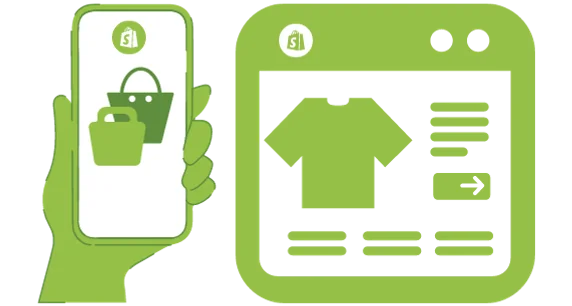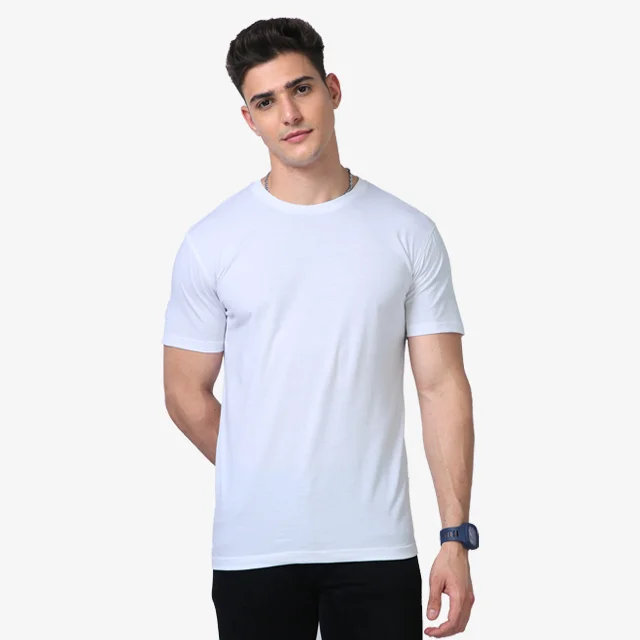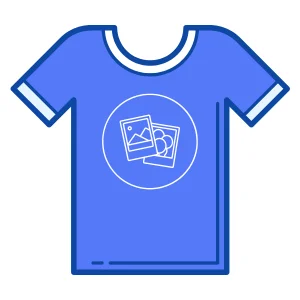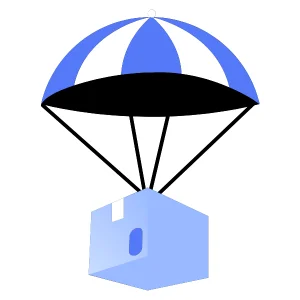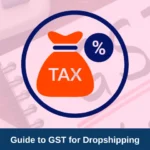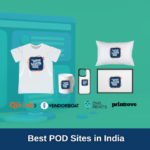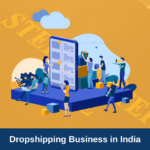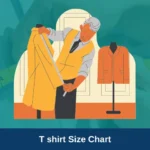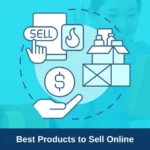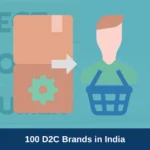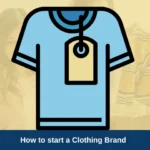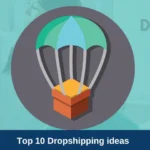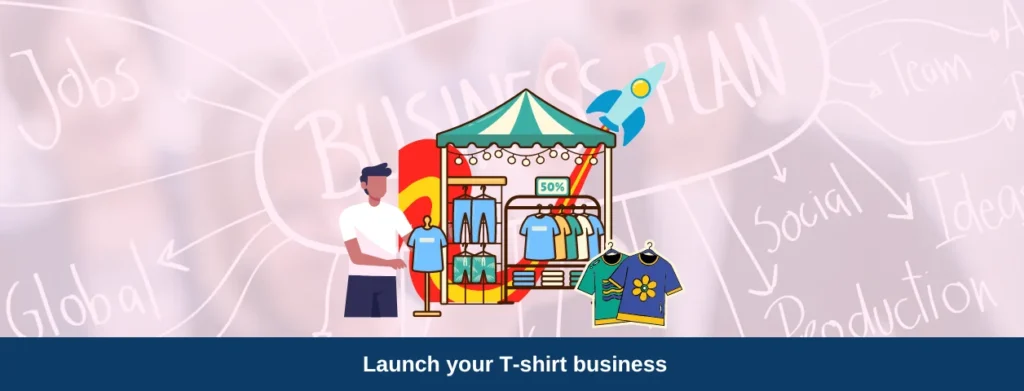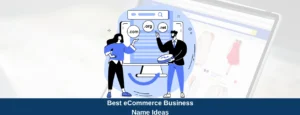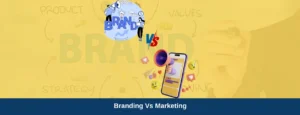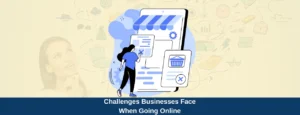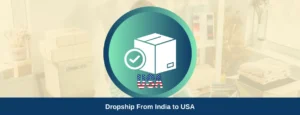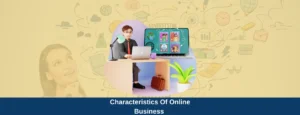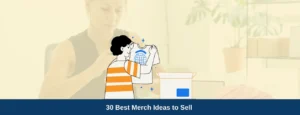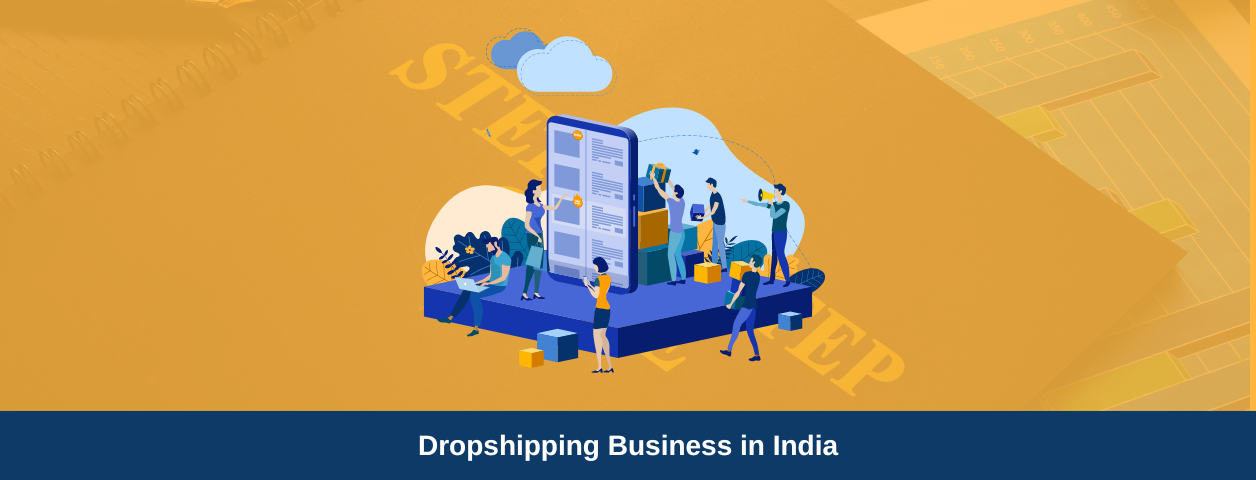Are you planning to launch your T-shirt business this year but don’t know how? Then, let me give you five reasons to make it a yes. It is low risk and high ROI, doesn’t require much investment, and is highly flexible and entirely automated.
Now that I’ve given you enough reasons to start, let me also share a business plan for starting your T-shirt printing business in India. Don’t worry if you have zero prior knowledge, as I’ll be diving deep in each part to make it easy to understand.
Download the custom Tshirt printing business plan template
Once you complete this guide, download this template which will help you strategize your clothing business idea with a research-driven approach.
Here’s the preview of the template:
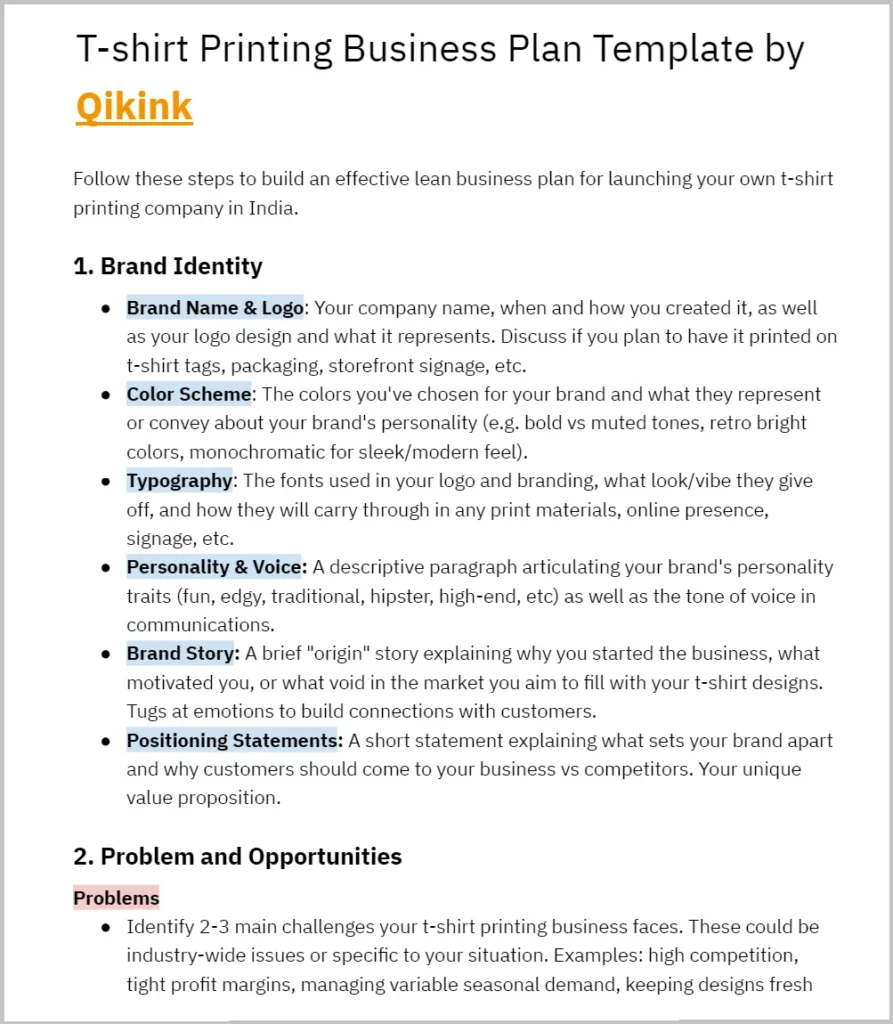
Download our template and start customizing it for your Tshirt printing business:
👉 Check out our detailed guide if you want to understand the steps required to build a winning clothing brand in India.
What is a T-shirt printing business plan?
A t-shirt printing business plan is the core idea upon which your entire business model will be based. Now, there are two ways for you to go. You can either go with the lean startup format or follow the traditional business plan format.
Let’s discuss both in detail so you can pick the one that suits you better.
You might prefer a lean startup format if you want to explain or start your business quickly, your business is relatively simple, or you plan to regularly change and refine your business plan.
What is the lean startup format?
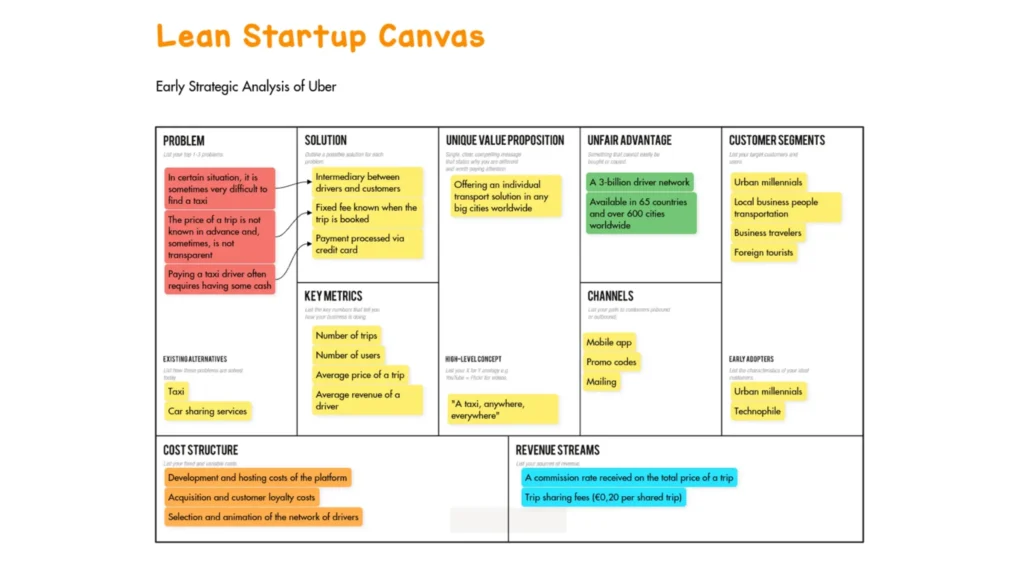
(Image source: Draft.io)
The “lean startup format” is all about testing your assumptions quickly and cheaply before investing heavily in resources. It’s perfect for industries like t-shirt printing, where trends and preferences can change fast.
Key principles to follow:
- Formulate hypotheses: Identify your target audience and their problems. Guess how your t-shirt designs will solve them (e.g., “Funny cat shirts will appeal to millennials with a good sense of humor”).
- Build Minimum Viable Products (MVPs): Don’t spend months perfecting the first batch. Start with a small, basic selection of designs and print methods. Think limited batches or pre-orders.
- Test and iterate: Get your MVPs in front of your target audience through online ads, pop-up shops, or social media. Collect feedback and data (sales, likes, comments).
- Adapt or pivot: Use the feedback to improve your designs or target a different audience. If nothing resonates, consider a complete pivot (e.g., phone cases instead of shirts).
Pros Of Using This Format:
- Saves money by avoiding resources on designs that don’t sell.
- See what resonates with your audience before scaling up.
- Reduces risk as you start small and grow steadily based on market demand.
Tips To Implement This In Your Business:
- Define your target audience first before designing the T-shirts.
- Start with 3-5 basic concepts you can print cheaply.
- Plan your testing channels. Some popular ones include online ads, social media, and local events.
- Give yourself a timeframe for testing and iterating your MVPs.
- Track sales, website traffic, and social media engagement to measure success.
2. Traditional Business Plan Format
You might prefer a traditional business plan format if you’re very detail-oriented, want a comprehensive plan, or plan to request financing from traditional sources.
What is the traditional business plan format?
The traditional business plan format is a more formal and in-depth approach to building a business. It is best for situations like when you are seeking loans or attracting significant investments.
Key Pointers of this business plan:
Here are some criteria you need to fulfill to successfully utilize this business model.
- A concise overview of your business, highlighting its value proposition, target market, and financial projections.
- Your business concept, mission, vision, and unique selling points.
- Market analysis for your business.
- Customer analysis covering ideal customer segments, their demographics, needs, and purchasing habits.
- Marketing plan
- Operations plan
- Management plan
- Financial projection, including a detailed forecast of revenue, expenses, profits, and cash flow for the next 3-5 years.
Pros of using this format:
- With this model, you can provide a detailed picture of your business for potential investors or lenders.
- You get to demonstrate professionalism and thorough planning, enhancing your legitimacy.
- If you are planning big, this model will push you to make decisions that are data-driven.
So, as you can see, both formats have their merits, but you need to choose the one that aligns with your goal. If you have previous experience in retail or dropshipping and want to build a big brand, you can follow the traditional format.
However, if this is your first time, and you are a one-man army, the lean startup format is more than capable for the T-shirt printing business in India.
T-shirt printing business plan vs. strategy vs. tactics vs. objectives
If you are confused between a T-shirt printing business’s business plan, strategy, tactics, and objectives and how to define each, this part is for you.
What it is | Purpose | Examples/ Key elements | |
Business Plan | A comprehensive document outlining your entire business, from its vision and mission to its target market, operations, and financial projections. I.e.- You can describe your unique t-shirt designs, target audience, production process, and financial projections for growth. | It serves as a guide for your business growth and can also be used to attract investors or lenders. |
|
Strategy | It is the “how” of your business. So, it defines the overall approach you’ll take to achieve your business goals. I.e- Try to define your competitive edge, pricing strategy, marketing channels (online, offline, collaborations), and growth strategy. | It guides your decision-making and resource allocation, ensuring your actions align with your desired outcomes. |
|
Tactics | These are the specific actions you’ll take to implement your strategy. I.e- You can launch social media campaigns, participate in relevant events, offer limited edition designs, and optimize production processes. | They translate your strategic plan into concrete steps that your team can execute. |
|
Objectives | These are specific, measurable, achievable, relevant, and time-bound (SMART) goals you want to achieve through your tactics. | They provide clear targets and milestones to track your progress and measure success. |
|
👉 Check out our marketing guide to scale your tshirt printing business.
How to create an online t-shirt printing business plan?
Creating an online T-shirt printing business plan includes fundamental steps like building brand identity, addressing problems and opportunities, etc.
So, let’s discuss each in-depth and get your business started.
Step 1. Brand identity
Brand identity goes beyond just your logo and colors; it’s the personality and values your business embodies. It’s how you want your customers to perceive you and what sets you apart.
For example, the famous t-shirt brands Bewakoof and The Souled Store carry a brand identity of being fun and trendy. Whereas brands like KultureShop are more abstract and artistic with their design elements.
What to include:
- Mission and vision of your business. e.g., if it is fun, trendy, or sustainable.
- Build a brand story by narrating your brand’s origin, purpose, and impact.
- Design distinct visuals by picking a distinct logo, color palette, fonts, and design elements that reflect your brand personality. Whatever you pick, apply them consistently across all platforms.
- Establish a tone and style for your written and verbal communication. Ensure it aligns with your brand identity.
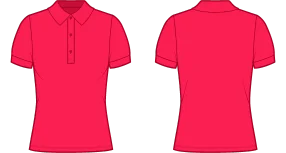
Step 2. Problem and opportunities
Identifying the problem and opportunities, aka market gap, can help you make your space faster. Problems and opportunities are two sides of the same coin, and by addressing both, you can grow your business more efficiently.
What to include:
- Do market research, including industry trends, competitors’ strategies, and customer demographics.
- Come up with unique ideas.
- Look for the design segments that are in demand, but your competitors haven’t explored yet.
3. Your solution
For your business to succeed and grow, your brand has to bring a unique solution. For a T-shirt printing business, the options are slim, but you can play around with the price, quality, and quantity to make your offers more lucrative.
What to include:
- You can sell high-quality T-shirts at an affordable price.
- Along with putting your designs on them, you can provide branding opportunities and cater to other corporations.
- You can sell in combos and multipacks that are more cost-efficient for customers.
- Add a variety of printing options, starting from emboss, rubber print, and embroidery.
Step 4. Value proposition
A value proposition is a concise statement that clearly communicates why someone should choose your T-shirt printing business over the competition. It’s not just about the shirts themselves but the unique benefits and emotional value you offer to your customers.
What to include:
- Find what you are targeting (i.e., gamers, animal lovers, sports lovers) and what the issues they face in general (i.e., low-quality print, high price, limited designs, slow turnover, etc.). After figuring those out, mention how you can solve those issues.
- Apart from their issues, mention the added benefits of shipping with you. For example, your business can sell eco-friendly prints, express shipping, or custom designs. Mention those as a part of your USP (unique selling point).
- While writing your statements, keep them short, clear, and easy to understand. For example, “high-quality T-shirts that express your true self.”
- You can also add a strong backstory or cause behind your T-shirt brand.
For example, there is an Indian homegrown t-shirt brand called NoNasties that sells minimal designs and artwork on their t-shirts. But their USP includes the backstory of how they launched their eco-friendly T-shirt business to highlight the high suicide rates of farmers in India.
You can also start your print on demand (POD) clothing business which is a high demand business opportunity in India, as more people are relying on online brands to shop their clothing items.
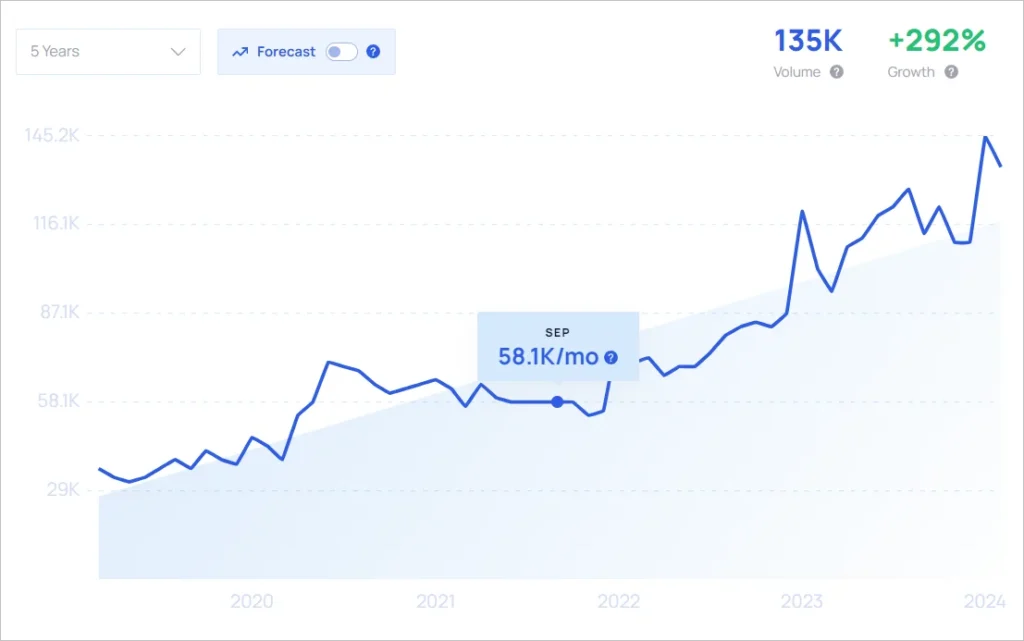
Here’s a visual representation of how the POD business model works:
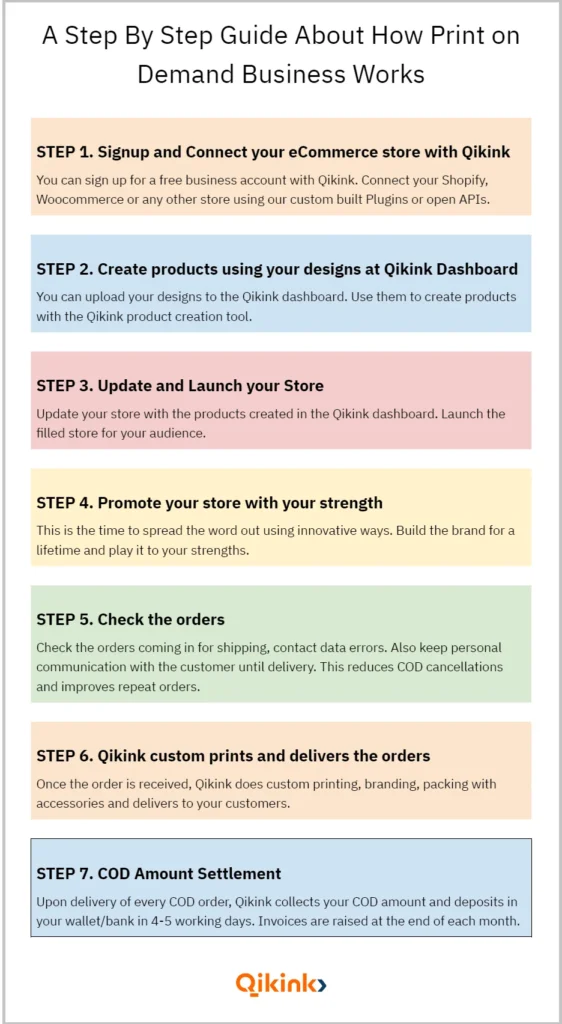
👉 Learn more about the products we offer at Qikink and clothing items you can sell online with the print on demand business model.
Step 5. Target the right target audience
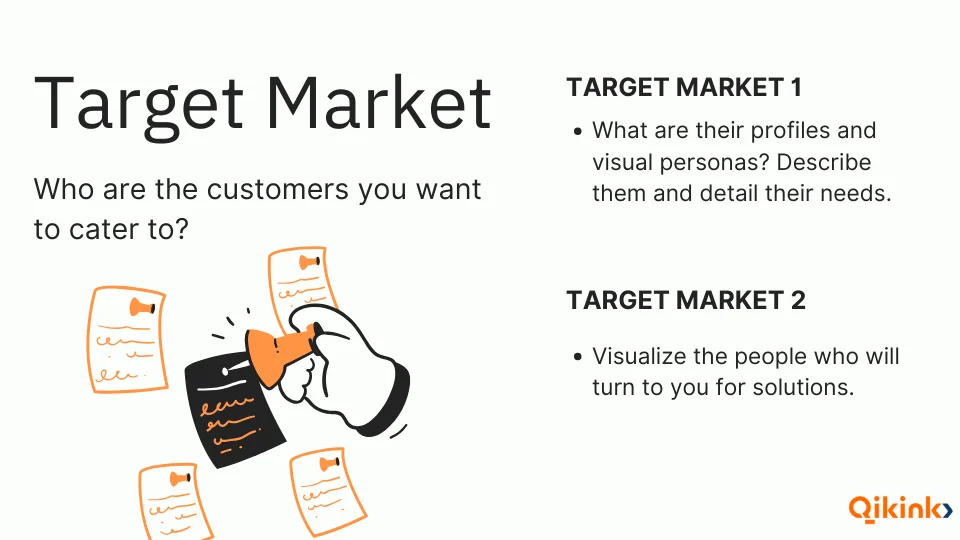
Be specific when you name your target market. Your business won’t be for everybody, so it’s important to have a clear sense of whom your business will serve. So, build a buyer’s persona first and plan accordingly
What to include:
Here is a step-by-step guide to building your buyer persona.
Step | Action |
1. Define Your Target Audience: |
|
2. Gather Data: |
|
3. Analyze and Segment: |
|
4. Develop Persona Profiles: |
|
5. Refine and Iterate: |
|
If you feel all this is too much to do, you can even take the help of AI tools to create your buyer persona.
Step 6. The competition
You need to know your competition to come up with a good plan. You should list them all down and see what they are doing that makes them unique and successful.
For online businesses, it is easier to do. Here are some tips for you to find the online competitors.
How To Do It:
- Use the built-in features of the SEO tools to find and get insights into the competitors. For example, in SEMrush, you can use the “Organic Research” and “Domain Overview” tools to identify websites ranking for relevant keywords (e.g., “custom T-shirts,” “[your niche] T-shirts”) and analyze their organic traffic.
- In Ahrehfs, there are “Site Explorer” and “Competitors” tools to discover websites with similar backlink profiles.
- You can use social media and search by using relevant hashtags.
Metrics To Check:
Here are the things you should be analyzing once you find your competitors.
- Look for their pricing structures and product offerings.
- Their promotions and discounts to understand their pricing strategy.
- Any marketing campaign that they have been doing.
- Read customer reviews and testimonials to understand their strengths and weaknesses.
- For social media, note their follower count and demographics. This can be the same audience you are targeting as well.
- Check out their content theme, posting frequency, and paid ad approach on different social media so you can make your own social media marketing strategy out of it.
Step 7. Business objectives
Business objectives are the results you are aiming to achieve in order to accomplish your longer-term company vision. The business objectives mainly focus on metrics like growth, revenue, productivity, and operational efficiency.
What to include:
- Always set SMART (Specific, Measurable, Attainable, and Time Bound) goals for efficiency. I.e., “Increase sales” is vague, while “Sell 1,000 custom T-shirts within the first 3 months” is SMART.
- Group your goals into relevant categories like financial, marketing, product, and operational.
- Begin with a few short-term, achievable goals to gain momentum, and then work your way up.
- Regularly monitor your progress towards your goals. Use tools like Google Analytics, social media insights, and sales reports to gather data.
- Market conditions and customer preferences can change. Be prepared to adjust your goals based on new information and feedback.
Step 8. Key activities and tactics to achieve objectives
Key activities and tactics are those activities that will help you achieve the business objectives. It can be anything, from setting up a campaign to finding the right supplier. The activities will greatly vary depending on your objectives, so let me share some tips based on different segments.
Financial Objectives:
- To increase sales, you can run targeted social media ads, provide limited-period offers, do influencer marketing, develop referral programs, etc.
- To increase profit margins, you can negotiate bulk pricing with suppliers, offer high-value add-on services like clubbing customized designs with express shipping, optimize your printing process so you can reduce waste and errors, etc.
Marketing Objectives:
- To increase website traffic, you can improve your SEO, create high-quality content, be active on social media, and run paid ads on Google.
- To increase social media engagement, you can run contests and giveaways, share user-generated content, ask engaging questions, and partner with micro-influencers.
Product Objectives:
- Increase the number of designs by running design content and collaborating with artists in your niche, monitor trending topics, and offer customization options.
- To improve customer satisfaction with product quality, use high-quality printing material, provide clear product descriptions and size charts, gather feedback from customers, and use it for improvement.
Step 9. Marketing channels
You have to keep in touch with your customers to stay relevant and known to them. For that, you can use different channels, starting from a social media page to your very own website.
Here’s a list of channels that you can use to communicate with your target audience.
Channel | How to Use It | Tips for Success |
Website: |
|
|
Social Media: |
|
|
Email Marketing: |
|
|
SEO (Search Engine Optimization): |
|
|
Paid Advertising: |
|
|
Influencer Marketing: |
|
|
Content Marketing: |
|
|
Step 10. Team and key roles
If your plan is to scale at some point, you have to have a team. But apart from scaling, having a team with set members and their roles can greatly improve your outcomes, streamline the process, and help the business become wholesome.
Here are some tips on what the possible team structure for a t-shirt printing business could be. You can have a core team and a team of freelancers.
In your core team, you can have:
- A designer (or a couple of them)
- A printing manager who manages the printing process,
- A marketing manager to handle promotions, ads, and social media,
- A customer service representative will provide support and respond to inquiries.
In your freelance team, you can outsource non-core tasks like accounting, web development, or content creation.
These team members will be enough for a medium to small-size business. But in the future, if you plan to build an advanced team, here are some roles you can add.
- Production Manager (they oversee the entire production process, from ordering materials to fulfilling orders.)
- Sales and marketing team.
Step 11. Tshirt manufacturing and supply chain
No matter what you do, if your product quality is not up to standard, your business will be a failure. So you must find good manufacturers and suppliers that can supply good quality t-shirts constantly.
When looking for the best t-shirt manufacturer, here are the things you should consider.
- They should have prior experience working on something similar to your business.
- What is their minimum order quantity? The lower it is, the better for you.
- Do they specialize in making printable T-shirts?
- How much variety can they provide? (in terms of color, fabric, size, and designs)
- Can they scale up the production for future growth?
- Does their manufacturing align with your brand ethics? For example, if your brand is eco-friendly and sustainable, do they make t-shirts like that?
Let’s take the example of a manufacturer like Qikink and see what qualities they have that match the above checklist.
https://www.youtube.com/watch?v=JqJxU_9NnOM&t=5s
- They have a product range starting from apparel to accessories, so you have a large room to diversify if you want.
- They provide printing options like DTG, DTF, Embroidery, Sublimation, Vinyl, Glow in Dark, Screen, Digital, UV, and Eco Solvent. So, options are endless.
- Their dispatch time is 2-3 days, and they ship overseas.
- You get the manufacturer’s pricing without any deposits or advanced payments.
- There are NO minimum order numbers!
- You can integrate it with your e-commerce store and sell directly. So you save time and money on inventory, shipping, and delivery.
- The ink they use is Oeko-Tex certified. So it’s skin-friendly and recommended for kids.
These are just some of the benefits of partnering with Qikink, but the best part is how you can start your t-shirt printing business with zero inventory. Check out their website to learn more details.
Step 12. Revenue streams
Revenue stream means the source of income of your business. For your t-shirt business, it can be direct sales, membership fees, selling advertising space, and so on.
It is common for an online business to have more than one revenue stream. So, let’s take a look at your options and how you can get them.
- Traditional product sales- You earn as you sell your products.
- Design services- you can offer branding designs for businesses and design custom merchandise.
- Sell digital products- you can sell downloadable designs or custom design templates that customers can print on their own.
- Exclusive community- you can build a community with a paid entry where you share exclusive offers, content, or early access to new designs.
- Sell online courses- You can sell courses on designing t-shirts.
- Build your social media- You can now monetize your Instagram and Facebook, too. So grow your accounts and earn from them.
Step 13. Cost structure/Expenses
Will your company focus on reducing cost or maximizing value? Define your strategy, then list the most significant costs you’ll face pursuing it.
Your cost structure, initial investment, or regular expenses will vary based on the business model you pick. So, let me break down the cost in case you start a traditional business and a dropshipping model.
Cost of the traditional model:
Type of business | Initial cost | Monthly cost |
Home-based, Small Scale | ₹70,000 – ₹1,20,000 (using free design software, basic marketing, and limited inventory) | ₹10,000 – ₹20,000 (covering marketing, shipping, and inventory replenishment) |
Commercial Space, Medium Scale, Direct Printing | ₹2,00,000 – ₹5,00,000 (including basic equipment, rent, website development, and initial inventory) | ₹30,000 – ₹50,000 (covering rent, utilities, marketing, shipping, and inventory replenishment) |
Large Scale, Advanced Equipment, Multiple Methods | ₹5,00,000+ (investing in high-quality equipment, professional website, and larger inventory) | ₹50,000+ (covering higher operational costs, marketing, and inventory management) |
Also, remember that the numbers I gave here are an approximation and will vary based on your location in India.
Cost of dropshipping model:
A dropshipping model is way more affordable than a traditional model. You can start your T-shirt business with a capital of ₹8,000 to ₹15,000. Here’s a cost breakdown for better understanding.
Fixed cost
- E-commerce platform: ₹1,000- ₹2,000
- Design and branding: ₹0- ₹1,000
Optional costs
- Marketing Tools: ₹500- ₹1,500 per month
- Paid advertising: ₹1,000- ₹3,000
If you want a more detailed breakdown of these costs, check out my cost breakdown of a dropshipping business in India.
Execute your online t-shirt printing business plan with Qikink
Going with the dropshipping model is not only cost-efficient, but it takes your minimum time and effort to start. And with the right partner like Qikink, you can get started even faster.
We are one of the top print-on-demand suppliers in India and have been helping entrepreneurs since 2010. Our mission is to help fashion ecommerce brands by providing manufacturing, global shipping, and inventory support all at once.
We use state-of-the-art printers, technology, and a wide range of inventory to support your t-shirt-printing business. Besides, our support will help your business become less wasteful and environmentally sound.
As a supplier, our core services include print-on-demand, drop shipping, and custom manufacturing, all of which are essential for starting a low-cost T-shirt printing business.
We are quite trusted in this business, too, and you can see what our customers have to say.
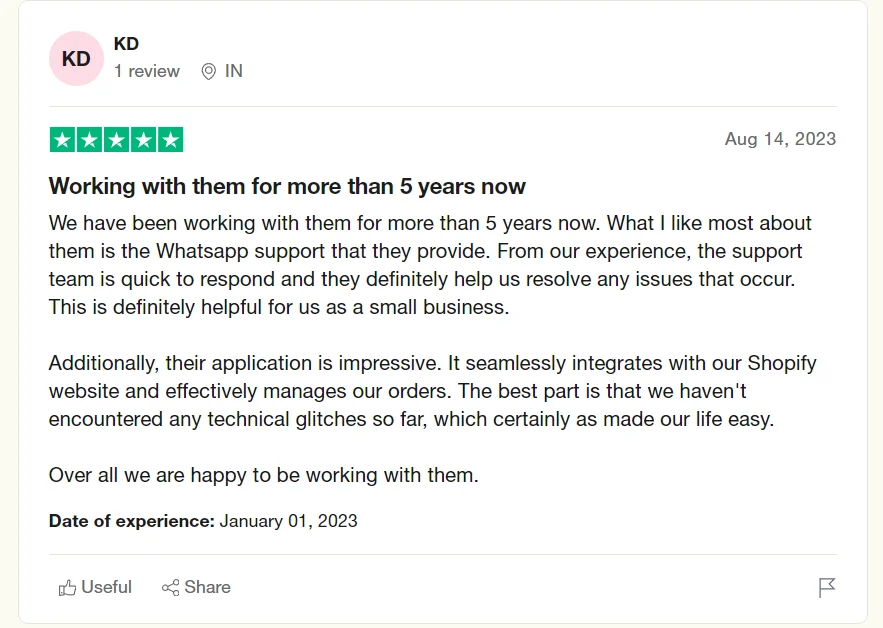
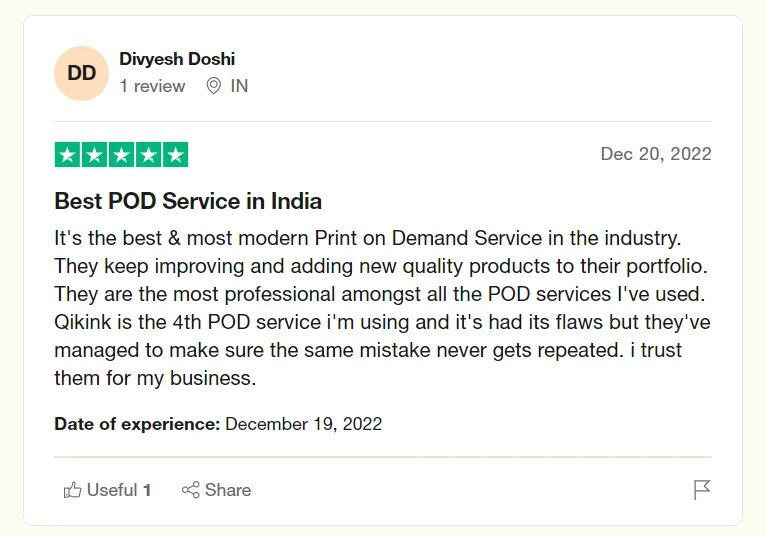
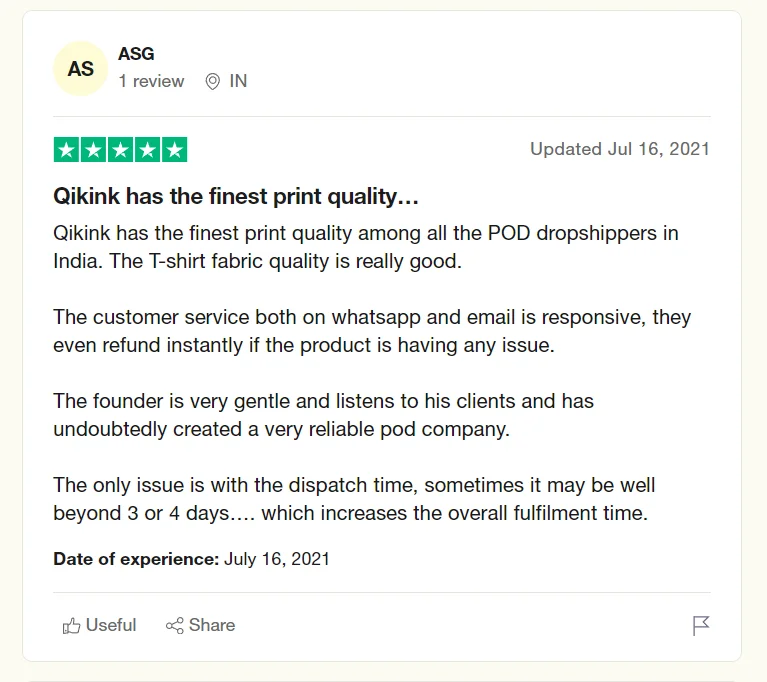
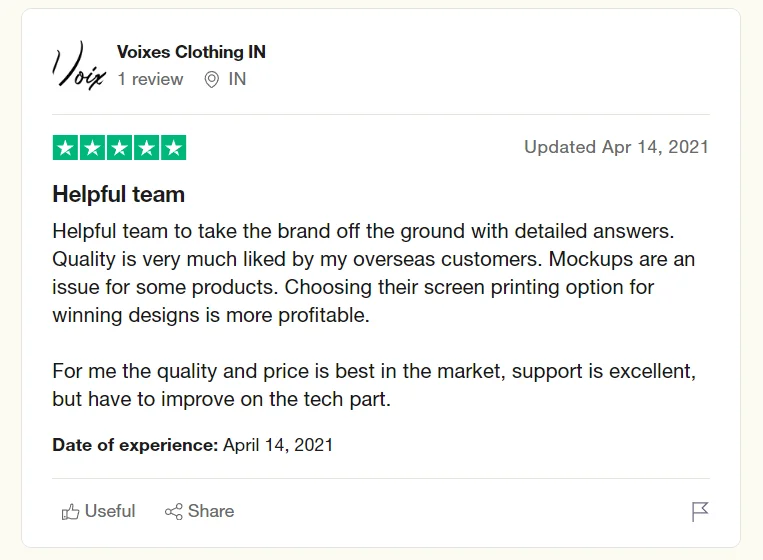
👉 Create your free Qikink account today and start your Custom T-shirt printing business in India.
With over 10+ years of experience in the industry, Our founder has dedicated his career to helping brands achieve exponential growth through innovative print-on-demand solutions.
